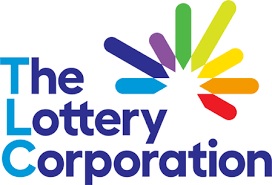The Lottery Corporation (ASX:TLC) is the leading lottery and Keno game operator in Australia. It commenced trading on the ASX on 24 May 2022, following its demerger from Tabcorp Holdings. We recently researched the Company to assess its prospects as a stand-alone listed entity.
About The Lottery Corporation
TLC holds long-dated licences to operate lotteries in all Australian states and territories excluding Western Australia. As synthetic lotteries are prohibited in Australia, TLC holds a monopoly position in the states and territories in which it operates.
The Company has two operating divisions:
- Lotteries (85% EBITDA): This consists of traditional draw-based games, such as Powerball & Oz Lotto. These represent the majority of TLC’s lotteries revenue. Instant Scratch-Its account for ~6% of revenue. TLC offers ~10 different lotter-based games, consisting of seven core base games & three jackpotting games. They are sold via both the retail and digital channels.
- Keno (15% EBITDA): Keno is a number game in which 20 numbers between 1 & 80 are randomly drawn, with instant cash prizes as well as multi-million-dollar jackpots. The correct selection of game numbers determines a winner or a loser. Keno can be played in ~3,409 venues across NSW, Victoria, Queensland, South Australia, and Australian Capital Territory (including digital approvals in Victoria and the ACT).
Key Fundamental Drivers
Annuity-Style Revenue Stream
There are several factors underpinning the infrastructure-like nature of the overall revenue base:
i. Lotteries has now grown at an average growth rate of 4.6% over the past 20 years, 4.8% over the past 10 years, and 7.0% over the past five years. The jackpot run causes some volatility from year to year. However, on a 3-year moving average basis, the growth rate has never been negative.
ii. Across the three largest states (NSW, Victoria and Queensland), lottery taxes were ~$1.5b last financial year and contribute ~2% to state taxes. A sustainable (and growing) stream of tax revenue is important for state and territory governments.
Uniquely combining both Fundamental and Technical Analysis
Not yet a subscriber? Join now for FREE!
Receive our weekly tips and strategies into your inbox each week.
BONUS: Sign up now to download our 21 page Trading Guide.
iii. TLC has long-dated exclusive licences. There is limited renewal risk given how entrenched TLC is in providing a national lottery product.
Outlook for Lotteries Division Highly Dependent on Jackpot Sequencing
Over the past three years, sales growth for the Lotteries division has come from a combination of base games and jackpot games. Jackpot games are typically higher growth in comparison to base games, as a result of periodical games changes (reviewed every 3-4 years) aimed at increasing jackpots (and also associated with prices increases), which in turn increases the number of active players and is one of the most significant drivers of growth for the Lotteries division.
The volatility in the contribution from jackpots is that once a jackpot has been won, the larger number of players heightens the impact of ‘jackpot fatigue’, which occurs when players wait for a larger prize before purchasing a ticket, resulting in fewer ticket sales and stymied prize growth.
In terms of recent performance, sales growth for the Lotteries division in 2H22 to date are estimated to be up by ~5%, supported by a number of jackpots including an $80m Powerball in May. The strong run of jackpots in FY22 is expected to support sequential growth in TTV (Total Transaction Value).
For FY23, earnings growth will be supported by the upcoming Oz lotto game change as well as an associated +8.3% increase in the ticket price. However, making accurate forecasts on the quantum of the expected earnings growth is challenging given that this ultimately depends on the sequencing of jackpots (which in turn underpin volume growth) as well the extent to which the 8.3% price increase can hold (although it is expected that the Company will be able to retain ~5% of the 8.3% price uplift).
Increased Online Penetration Underpin Potential for Margin Expansion
Over the past three years, digital (online) sales have grown at ~20-30% per annum in comparison to retail sales which have been relatively flat over the same period. Digital sales penetration has benefited from shifts in consumer behaviours, larger jackpots (where typically online penetration increases) and digital resellers such as Jumbo Interactive, with whom TLC has a reseller agreement for digital sales.
Digital penetration growth is expected to continue and it is possible that online sales comprise ~50% of overall sales by FY25. This factor, together with the potential for customers converting to online increasing expenditure due to convenience / frequency of purchases (as omni-channel customers in general spend more), underpin the potential for further expansion in EBITDA margin over the medium term.
Potential for Capital Management
The Lottery Corporation is a highly cash generative business, underpinned by the long-run and generally exclusive licences within Australia across lotteries and Keno and low levels of CAPEX requirements with just one major licence renewal in 2028.
Notwithstanding TLC’s higher leverage profile (compared to prior to the de-merger), gearing levels are expected to decline progressively out to FY24 as a result of the potential for strong free cashflow generation.
Given that gearing is below the target range, coupled with the low levels of capital intensity and no near-term licence renewals, there is scope for capital management optionality. As such, in the absence of any Merger & Acquisition opportunities, the lower gearing profile expected over the medium term may result in special dividends or a share buyback.
Fundamental View
We consider the key fundamental attractions for TLC to be: i) The defensiveness of the earnings profile, ii) A high dividend payout ratio, iii) An improving balance sheet position and iv) Margin expansion over the medium term, mainly from increased online penetration.
Having said that, we consider that the market is ascribing a premium rating to the shares, given that TLC is currently trading on a P/E multiple of ~24x on a FY23 basis which appears demanding on the context of forecast EPS growth of ~8% over FY22-25 on CAGR basis.
Notwithstanding that the demerger from Tabcorp has to potential to unlock value for TLC as a stand-alone lotteries business (which led to the lotteries assets being discounted by association); we consider the current premium multiple is also unrealistic for a Company with such a short history as an ASX-listed entity.
Michael Gable is managing director of Fairmont Equities.
Current share prices available here.
You can learn more about technical analysis in this article.
An 8-week FREE TRIAL to The Dynamic Investor can be found HERE.
Would you like us to call you when we have a great idea? Check out our services.
Disclaimer: The information in this article is general advice only. Read our full disclaimer HERE.
Like this article? Share it now on Facebook and Twitter!

